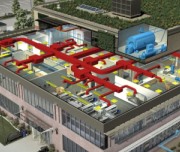System Impacts
Resources Impact
Using the data from submetering systems to better manage building operations and maintenance can have a significant impact on a building’s overall resource use. The value that submeters provide is found in the range of potential resource savings that are gained by making informed decisions and the subsequent actions that are taken based on metered data.
Resource Use
Submetering by itself does not reduce resource use, greenhouse gases, or costs. In fact, installing and monitoring submetering technologies will require resources. However, well-designed submetering programs generate data that can guide management strategies, operational and investment decisions, and tenant interactions that ultimately can be used for significant resource-reduction benefits.
Uses of Submetering Data
Submeters are a versatile building technology that can provide diverse resource benefits. Metered data helps to verify utility accuracy, identify energy-consuming loads, and document energy reduction efforts and the accurate allocation of energy costs. The following details common areas for the application of submetering systems found by the National Science and Technology Council. Additional and complementary uses are discussed further in the System Impacts: O&M section.
Environmental Impact
Submeters help to account for actual resource usage by providing detailed facility data. This data can be used to inform sustainability and efficiency strategies. Achieving sustainability goals reduces capital investment and operating costs, and potentially significantly decreases resource use and a building’s overall environmental footprint while improving occupant comfort.
Best Practices and Strategies
| Start by focusing on targeted or high-use consumption areas, such as chiller plants, PV and renewable energy systems, detailed plug-load level, and tenants. | When submetering across systems, focus on consolidating and standardizing data in one place or platform. | Consider choosing and sizing submetering equipment based on actual design loads instead of switch gear outputs. |
| Define metering and stakeholder objectives and how the data generated will be used to meet those objectives. | When it comes to procuring a metering system, resist the urge to ‘over-buy’ and focus on the specific metering equipment needed to accomplish your building resource objectives. |

